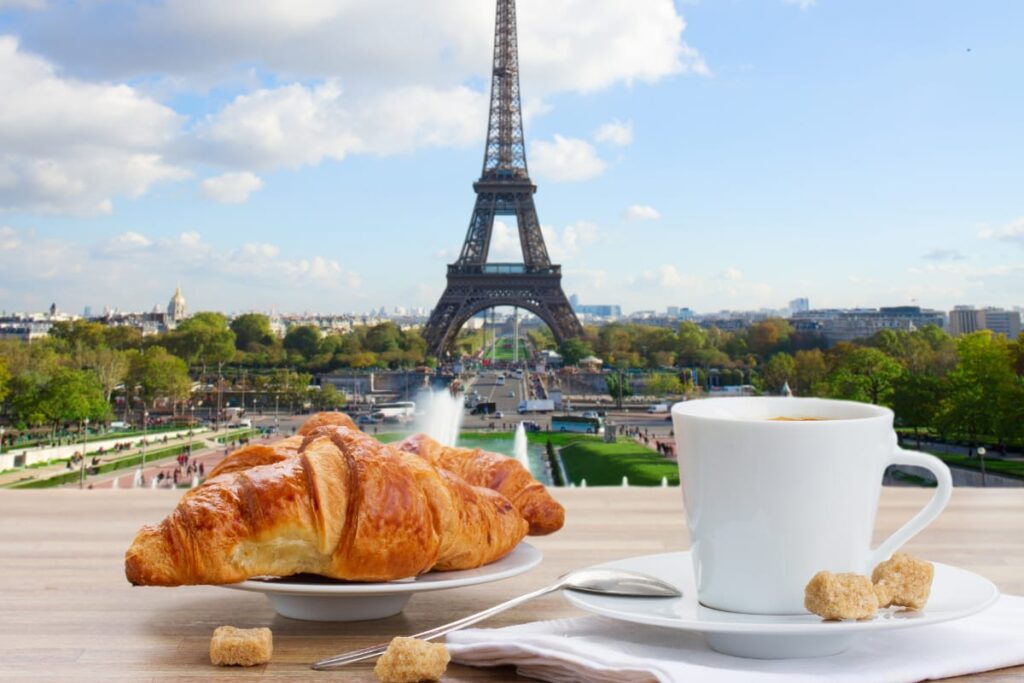🥐 20 Delicious Croissant Facts Every Food Lover Should Know
Few pastries in the world are as beloved as the croissant. Flaky, buttery, and iconic, it has become a global symbol of French cuisine. But beyond its irresistible taste, the croissant has a fascinating story full of history, culture, and fun trivia. Whether you’re curious about croissant history, exploring the different kinds of croissants, or planning a trip to taste the best croissants in Paris, these facts will give you a whole new appreciation for this famous pastry.
🌟 Croissant History: From Austria to France
Before we dive into fun croissant facts, let’s clear up one common misconception. The croissant wasn’t originally French!
- The earliest version of the croissant was the Austrian kipferl, a crescent-shaped bread eaten as far back as the 17th century.
- The pastry became popular in France when Austrian princess Marie Antoinette introduced it after marrying King Louis XVI.
- French bakers transformed the simple kipferl into the flaky, layered pastry we know today by using laminated dough.
- So while Austria invented the crescent bread, France perfected it—making the croissant a cultural icon.
🥖 Where to Find the Best Croissants in Paris
If you’re serious about tasting the best croissants in Paris, a trip to these legendary bakeries is essential:
- Du Pain et des Idées – famous for its artistry and golden, buttery croissants.
- La Maison d’Isabelle – award-winning bakery using organic ingredients.
- Blé Sucré – loved for its perfectly caramelized and flavorful croissants.
- Le Grenier à Pain – winner of multiple Paris competitions for best croissant.
- Pierre Hermé – for gourmet, innovative takes on the traditional croissant.
In Paris, eating a croissant is more than breakfast—it’s part of the city’s identity.
🌍 Why Croissants Are More Than Just Pastries
Croissants are more than food—they’re cultural symbols. They represent French dedication to quality, technique, and the art of savoring life. From their Austrian roots to their Parisian perfection, croissants tell a story of history and craftsmanship.
For travelers, enjoying a croissant in Paris is about much more than taste. It’s about pausing, people-watching at a café, and experiencing a tradition that has been passed down for centuries.

🥐 20 Croissant Facts to Know
Croissants may look like simple breakfast pastries, but they carry centuries of culinary tradition, innovation, and cultural meaning. Here are 20 croissant facts that go beyond the basics—perfect for food lovers, travelers, and anyone curious about the magic behind these buttery layers.
1. The Word Croissant Means “Crescent”
The name croissant literally translates to “crescent” in French. The shape is said to symbolize victory over the Ottoman Empire, whose flag featured a crescent moon. This link to history makes every croissant bite more symbolic than you’d think.
2. Authentic Croissants Must Use Butter
French tradition—and even law—requires that authentic croissants (au beurre) be made with pure butter only. This ensures the signature richness and flakiness. Margarine-based versions (ordinaire) exist, but most Parisians and food purists consider them inferior.
3. Over 30 Layers Make a True Croissant
The hallmark of a great croissant is its delicate layers. A proper croissant is made by laminating dough—rolling and folding it with butter repeatedly. By the end, there are at least 27–32 layers, creating the signature flaky texture that shatters when bitten into.
4. Croissants Belong to Viennoiserie
Croissants aren’t just bread or pastry; they’re classified as viennoiserie, a category that blends bread techniques with pastry luxury. Alongside croissants, viennoiserie includes pain au chocolat, brioche, and Danish pastries—each with Austrian roots.
5. Two Types of Croissants Exist in France
You’ll often find two options in Paris bakeries: croissant ordinaire (made with margarine) and croissant au beurre (buttery and richer). The butter version is usually straighter, while margarine croissants are often crescent-shaped.
6. Marie Antoinette Popularized Them in France
One fascinating piece of croissant history: the Austrian princess Marie Antoinette reportedly missed her homeland’s kipferl after marrying King Louis XVI, so she had French bakers recreate it. Their twist on the recipe gave birth to the French croissant.
7. Croissants Are a Parisian Breakfast Ritual
In Paris, croissants are more than food—they’re part of the morning rhythm. Locals pick them up fresh from their neighborhood boulangerie and enjoy them with coffee or hot chocolate. This ritual reflects the French philosophy of savoring life.
8. Almond Croissants Were Invented from Leftovers
A true baker’s secret: almond croissants were originally created to avoid waste. Day-old croissants were sliced, filled with almond cream, dipped in syrup, and rebaked. Today, almond croissants are a Parisian favorite in their own right.
9. Pain au Chocolat Isn’t a Croissant
Though often lumped together, pain au chocolat is technically different. It uses the same laminated dough but is rectangular and filled with two sticks of chocolate. In southern France, it’s also called chocolatine.
10. Paris Holds Annual Best Croissant Competitions
Paris celebrates its love for croissants with yearly competitions, where judges evaluate texture, flavor, and layering. Winning bakeries instantly become hotspots, with lines stretching out the door. These competitions keep standards high for the best croissants in Paris.
11. French Law Protects Croissants
In France, labeling a croissant au beurre is legally protected. It guarantees no substitutes like oils or margarine are used. This reflects how seriously the French take their food authenticity and cultural pride.
12. France Eats Over 2 Billion Croissants a Year
Yes, billions! This staggering number shows how deeply croissants are woven into French daily life. Almost every French café, bakery, and breakfast table includes croissants at some point.
13. The Largest Croissant Weighed 217 Pounds
For fun trivia, the Guinness World Record for the largest croissant was set in 2012 in Poland. Weighing over 217 pounds, it required a small team of bakers and industrial ovens to create.
14. Traditional French Croissants Are Less Sweet
One of the surprising croissant facts is that authentic French croissants are not overly sweet. They are buttery, flaky, and subtly rich, unlike many international versions, which tend to be sugar-heavy.
15. Croissants Are Commonly Dipped in Coffee
A very Parisian habit is dunking croissants into coffee or hot chocolate. It may seem unusual to foreigners, but locals swear it enhances the flavor and texture.
16. The Cronut Craze Was Inspired by Croissants
In 2013, Dominique Ansel created the “cronut” in New York City—a croissant-doughnut hybrid that sparked global food hysteria. Lines wrapped around city blocks, proving the croissant’s endless adaptability.
17. Croissants Are Infamously Hard to Bake at Home
Many amateur bakers discover that croissants are among the most technically challenging pastries. Perfect lamination requires precise temperature control and hours of folding, resting, and proofing. Even small errors can ruin the layers.
18. Savory Croissants Are a Global Trend
Beyond almond or chocolate, savory croissants filled with ham, cheese, or spinach are growing in popularity. In some bakeries, you’ll even find gourmet versions with truffles or smoked salmon. These different kinds of croissants show the pastry’s versatility.
19. Croissants Have Unique Global Variations
Croissants may be French icons, but bakers worldwide have put their own spin on them:
- Japan: Matcha croissants with green tea filling.
- Argentina: Medialunas, a sweeter, denser croissant version.
- USA: Rainbow croissants and croissant-doughnut hybrids.
- Turkey: Tahini croissants with nutty flavors.Still, the best croissants in Paris remain the gold standard.
20. Croissants Represent French Culture and Identity
At their core, croissants are not just food—they’re a cultural emblem. They represent French dedication to craft, tradition, and quality. Eating one in Paris is about connecting with centuries of history and the art of savoring life’s small pleasures.


